-
Wetland preservation is good business
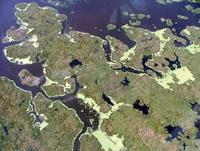
A recently published study is making the case for wetland preservation by highlighting the economic incentives that such preservation could provide to urban centers.Infrastructure investment in urban waterfronts could soon be seen as one of the best economic decisions a city could make. The National Oceanic and Atmospheric Administration says that “$1 million invested in coastal restoration creates 17.1 jobs, compared to just 8.9 jobs for every $1 million invested in oil and gas development.”
-
-
U.S. corn yields increasingly vulnerable to hot, dry weather
The United States produces 40 percent of the world’s corn, mostly in Iowa, Illinois, and Indiana. As more than 80 percent of U.S. agricultural land relies on natural rainfall rather than irrigation, corn farmers in these regions depend on precipitation, air temperature, and humidity for optimal plant growth. U.S. corn yields are growing more sensitive to heat and drought. Farmers are faced with difficult tradeoffs in adapting to a changing climate in which unfavorable weather will become more common.
-
-
Longer periods of tornado activity are more destructive, but also more predictable
Significant tornado outbreaks, and especially strong tornadoes, are more likely occur within periods of activity lasting three or more days, according to a new study. The study examined thirty years of U.S. weather records and found that an outbreak of twenty or more reported tornadoes had a 74 percent probability of occurring during a period of tornado activity lasting three or more days. During those same periods, a tornado rated 3 or higher on the Enhanced Fujita scale had a 60 percent probability of hitting.
-
-
Producing more oil by capturing carbon
Any method that leads to the production of more oil seems counter to the prevailing wisdom on climate change that says use of more greenhouse-gas-emitting fuel is detrimental. There is one oil-recovery process, however, which some say could be part of the climate change solution and now unites unlikely allies in industry, government and environmental groups.
-
-
New scanning technique may end on-board liquid restrictions
A new machine which can identify the chemical composition of liquids sealed within non-metallic containers without opening them is one of three candidates announced Monday to be in the running to win the U.K.’s premier engineering prize, the MacRobert Award. Already being deployed in sixty-five airports across Europe, this innovation can protect travelers by screening for liquid explosives and could spell the end of the ban on liquids in hand luggage.
-
-
New bug sensor saves crops, people
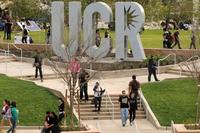
For hundreds of years humans have attempted to kill unwanted insects. While some blanket methods have been successful, they can be costly and create environmental problems. A new sensor developed by UC Riverside researchers aims to change that by counting and classifying the insects so that the substance used to eradicate the harmful insects can be applied on a precision targeted level. The inexpensive wireless sensors have 99 percent accuracy, and they are expected to have applications fighting insect-borne diseases, such as malaria, and insects that damage crops.
-
-
Harder ceramic for armor windows
The Department of Defense needs materials for armor windows that provide essential protection for both personnel and equipment while still having a high degree of transparency. To meet that need, scientists have developed a method to fabricate nanocrystalline spinel that is 50 percent harder than the current spinel armor materials used in military vehicles.
-
-
Businesses take more responsibility for sustainable freshwater use
Growing freshwater scarcity owing to rising water demands and a changing climate is increasingly perceived as a major risk for the global economy. In a special issue of Nature Climate Change, devoted to this emerging global concern, researchers argue that consumer awareness, private sector initiatives, governmental regulation, and targeted investments are urgently necessary to move toward sustainable water use across value chains.
-
-
Promoting nuclear power to avoid geoengineering
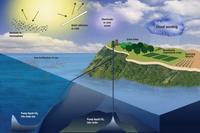
There are two basic geoengineering strategies to reduce climate change: injecting aerosols such as sulfates into the stratosphere to block a portion of the sun’s radiation and thereby cool the Earth, much as volcanic emissions do; and the large-scale removal of carbon dioxide from the atmosphere. The aerosol-injection approach is much more likely to be pursued at current stages of technological development. Scientists say that in order to avoid the need for geoengineering, which could have enormous unforeseen consequences, the international community should pursue increased deployment of nuclear power plants, which do not emit carbon dioxide, to address the climate crisis. Many climate scientists are generally supportive of nuclear engineering and less fearful of it than they are of geoengineering.
-
-
Odds of storm waters overflowing Manhattan seawall up 20-fold, new study says

Maximum water levels in New York harbor during major storms have risen by nearly two and a half feet since the mid-1800s, making the chances of water overtopping the Manhattan seawall now at least twenty times greater than they were 170 years ago, according to a new study. Whereas sea-level rise, which is occurring globally, has raised water levels along New York harbor by nearly a foot and a half since the mid-nineteenth century, the research shows that the maximum height of the city’s “once-in-10-years” storm tide has grown additionally by almost a foot in that same period.
-
-
Room-scouting robot to help first responders, soldiers
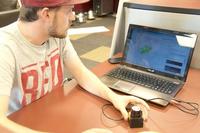
Firefighters, police officers, and military personnel are often required to enter rooms with little information about what dangers might lie behind the door. A group of engineering students at Arizona State University is working on a project which would help alleviate that uncertainty. The product they are building consists of a laser sensor attached to a motor that sweeps all the way around a room, taking 700-800 individual scans, each one with about 680 unique data points. This information is transmitted to a computer program that creates a picture of the room and all its contents. Whoever is controlling the sensor remotely can see and analyze the data in real-time, as it is being collected.
-
-
PathSensors introduces portable pathogen identifier system
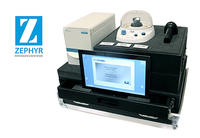
Baltimore, Maryland-based PathSensors, Inc. has introduced the portable Zephyr Pathogen Identifier system. The company says it delivers rapid, reliable detection of bacteria, virus, and toxins in powder and liquid samples in minutes. The Zephyr Identifier uses CANARY (Cellular Analysis and Notification of Antigen Risks and Yields) technology, which is licensed from the MIT-Lincoln Laboratory.
-
-
Human behavior studies offer helpful insights to airport security officers
A recent Sandia National Laboratories study offers insight into how a federal transportation security officer’s thought process can influence decisions made during airport baggage screening, findings which are helping the Transportation Security Administration (TSA) improve the performance of its security officers. The TSA-funded project focused on the impacts on threat detection when transportation security officers are asked to switch between the pre-check and standard passenger lanes.
-
-
One in ten American schoolchildren in school near risky chemical facility
One year after the fertilizer facility explosion in West, Texas, which destroyed and severely damaged nearby schools, nearly one in ten American schoolchildren live and study within one mile of a potentially dangerous chemical facility. A new study shows that 4.6 million children at nearly 10,000 schools across the country are within a mile of a facility which produces, uses, or stores significant quantities of hazardous chemicals identified by EPA as particularly risky to human health or the environment if they are spilled, released into the air, or are involved in an explosion or fire.
-
-
Dams will not reduce flow of sand to Mississippi River Delta
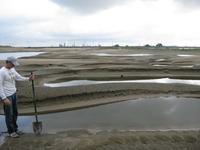
The wetlands of the Mississippi River Delta are slowly sinking and rapidly eroding, but new research has found the river’s supply of sand — the material engineers most need to rebuild the delta — will stay constant for centuries. The new study is encouraging news for scientists and government officials who are working to shore up southeastern Louisiana’s rapidly disappearing wetlands.
-
More headlines
The long view
Autonomous Vehicle Technology Vulnerable to Road Object Spoofing and Vanishing Attacks
Researchers have demonstrated the potentially hazardous vulnerabilities associated with the technology called LiDAR, or Light Detection and Ranging, many autonomous vehicles use to navigate streets, roads and highways. The researchers have shown how to use lasers to fool LiDAR into “seeing” objects that are not present and missing those that are – deficiencies that can cause unwarranted and unsafe braking or collisions.
Tantalizing Method to Study Cyberdeterrence
Tantalus is unlike most war games because it is experimental instead of experiential — the immersive game differs by overlapping scientific rigor and quantitative assessment methods with the experimental sciences, and experimental war gaming provides insightful data for real-world cyberattacks.
Prototype Self-Service Screening System Unveiled
TSA and DHS S&T unveiled a prototype checkpoint technology, the self-service screening system, at Harry Reid International Airport (LAS) in Las Vegas, NV. The aim is to provide a near self-sufficient passenger screening process while enabling passengers to directly receive on-person alarm information and allow for the passenger self-resolution of those alarms.
Falling Space Debris: How High Is the Risk I'll Get Hit?
An International Space Station battery fell back to Earth and, luckily, splashed down harmlessly in the Atlantic. Should we have worried? Space debris reenters our atmosphere every week.
Testing Cutting-Edge Counter-Drone Technology
Drones have many positive applications, bad actors can use them for nefarious purposes. Two recent field demonstrations brought government, academia, and industry together to evaluate innovative counter-unmanned aircraft systems.
Strengthening the Grid’s ‘Backbone’ with Hydropower
Argonne-led studies investigate how hydropower could help add more clean energy to the grid, how it generates value as grids add more renewable energy, and how liner technology can improve hydropower efficiency.
